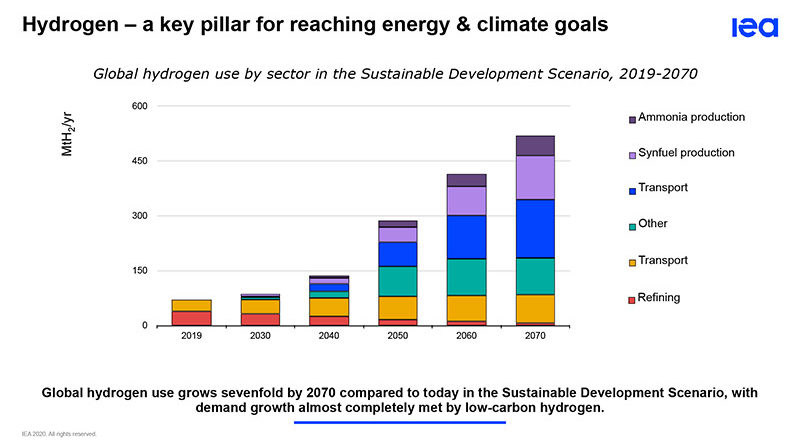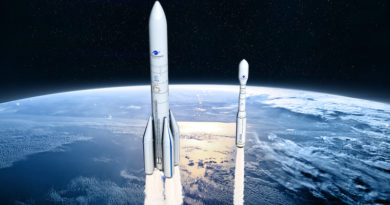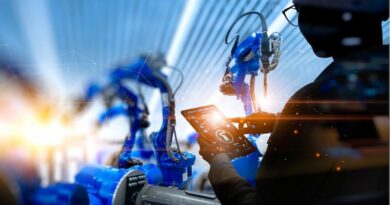
Global cooperation is essential for realising hydrogen’s huge potential
Hydrogen has for too long been ignored by the energy sector, despite the important role it can play in addressing our environmental challenges like climate change and air pollution – and in enhancing energy security. Momentum behind it continues to grow, but IEA analysis shows there is still a huge amount of work to be done for it to reach a scale that would make a key difference to efforts to reach international energy and climate goals.
Much has happened since the IEA released our landmark report on hydrogen at the G20 Energy Ministers Meeting in Japan in June 2019. Over the past two years, around 80 megawatts (MW) of electrolysers, which produce hydrogen from electricity, were installed worldwide, boosting global capacity to around 250 MW. The largest electrolyser plant to date was opened last year in Fukushima, Japan. And two large projects to produce hydrogen from natural gas with carbon capture became operational in 2020. They will capture 1.5 million tonnes of CO2 per year. In 2019, 12 500 fuel cell vehicles were sold, double the amount of 2018.
Governments around the world are stepping up their efforts. Since early 2019, 12 countries and the European Commission have set out ambitious hydrogen strategies or roadmaps.
At least another nine are due to be released very soon.
These encouraging trends show the energy world’s high expectations for hydrogen. But the progress gives us no cause for complacency – much more has to be done. The ambition of the strategies that governments are setting out is impressive. The challenge now is to design and implement the policies, regulations and investment plans that will turn those ambitions into reality. The IEA is ready to play a significant role by providing its data and policy expertise to support governments in this critical phase.
Hydrogen technologies are not the only ones we need to reach our energy and climate goals. We will need a wide range of clean energy technologies – from renewables, nuclear power and energy efficiency to batteries, carbon capture and bioenergy. But hydrogen is a critical part of any ambitious clean energy transition strategy.
The use of hydrogen will need to expand across many parts of the global energy sector – from road transport to shipping and aviation, from iron and steel production to the power sector.
In fact, if the world is to reach net-zero emissions as outlined in the IEA’s Sustainable Development Scenario, hydrogen could account for as much as 13% of total final energy consumption. And practically all hydrogen production by then would need to be low carbon, either through the use of fossil fuels with carbon capture, utilisation and storage – or through the use of electrolysers. Around 3 300 gigawatts of electrolysers would be needed. In practical terms, this requires bringing the equivalent of today’s largest electrolyser into operation every hour for the next few decades.
This is why the IEA is deepening and expanding its work on hydrogen to support its continued development. This includes closely collaborating with the Japanese government on the Hydrogen Energy Ministerial Meeting this year. The IEA is proud to be able to contribute its expertise and convening power to the event, since international cooperation will be essential for successfully tapping into hydrogen’s huge clean energy potential.
Hydrogen is a big opportunity for many countries. The IEA is committed to help governments and industries in making their very own choices for this important technology opportunity.
As we pointed in our 2019 report, the coming decade will be critical for hydrogen’s long-term success.
To help the world keep track of progress on this front, the IEA will start publishing a new Global Hydrogen Review this year. This report will serve as hydrogen’s North Star, assessing the impact of all government and industry plans. It will examine how actual on-the-ground progress compares with stated ambitions from around the world, and help decision-makers to fine-tune their strategies to drive real progress in investment.
And I am very pleased that Noé van Hulst, the former Hydrogen Envoy of the Netherlands and now the Chair of the International Partnership for Hydrogen and Fuel Cells in the Economy (IPHE), has agreed to act as a special adviser to the IEA on hydrogen-related matters and ensure that we work with all hydrogen stakeholders to advance the cause.
The time for hydrogen may have finally come, and countries around the world have to be ready to seize the opportunity. The IEA is ready to do all it can to support this.




